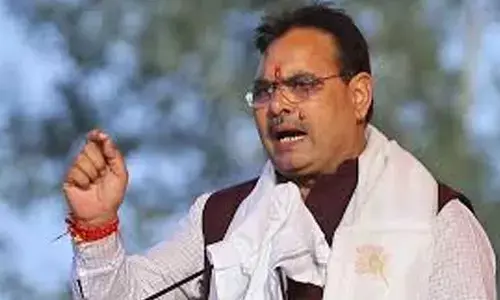From Manuscripts to Memory: Bharat’s Cultural Treasures Enter UNESCO’s Register

Bharat's rich cultural heritage has been celebrated with the recent inscription of three invaluable treasures into the UNESCO Memory of the World Asia-Pacific Regional Register.
Bharat's rich cultural heritage has been celebrated with the recent inscription of three invaluable treasures into the UNESCO Memory of the World Asia-Pacific Regional Register. The occasion, which took place at the 10th meeting of MOWCAP in Ulaanbaatar, Mongolia, marks a historic achievement for India and global cultural preservation efforts.
The three treasures that were inscribed into the regional register are the Manuscript of the Sahdayāloka-Locana, the Manuscripts of the Pañcatantra, and the Illustrated Manuscripts of Rāmacaritamānasa of Tulasīdā. These nominations represent more than just ancient texts; they are living repositories of wisdom, morality, and aesthetic brilliance.
The Sahdayāloka-Locana is a seminal text of Indian poetics that reflects the sophisticated literary traditions that have flourished in India for centuries. It serves as a guiding light for scholars and enthusiasts worldwide.
The manuscripts of the Pañcatantra are a testament to India's enduring contribution to world literature. These moral fables have transcended geographical and cultural boundaries, enriching the literary landscape of humanity.
Theillustraed manuscripts of Rāma caritam ānasa of Tulasīdā offer a vivid portrayal of the beloved epic, the Ramayana. Through exquisite illustrations and lyrical verses, these manuscripts encapsulate the ethos and values of Bharatvasi.
The inscription of these treasures into the regional register signifies Bharat's commitment to preserving and sharing its cultural legacy with the world. It ensures that future generations will have access to these invaluable pieces of history.
The achievement is not only a celebration of India's past but also a catalyst for increased awareness and engagement with the Memory of the World Programme in India. Prof. Ramesh Chandra Gaur, Dean (Academics) and Head of the Department (Kalanidhi Division), Indira Gandhi National Centre for Arts (IGNCA) who played a crucial role in securing these inscriptions, emphasized the importance of this achievement in preserving and disseminating cultural heritage.
The photo of the certificate distribution ceremony captures the proud moment of presenting the world with three of the vast treasures and serves as a reminder of the significance of this milestone. It symbolizes the culmination of years of dedication and hard work, as well as a renewed commitment to the preservation and dissemination of cultural heritage.
The UNESCO Memory of the World Programme is a global initiative that safeguards and promotes the preservation and promotion of human documentary heritage. It operates through Regional and International Registers, which recognize and safeguard cultural treasures from around the world. The Regional Register, like the UNESCO Memory of the World Asia-Pacific Regional Register, celebrates cultural heritage within specific geographical areas, fostering pride and ownership among communities. It also encourages local initiatives for preservation and dissemination, promoting mutual respect and understanding among diverse cultures.
The International Register, on the other hand, encompasses documentary heritage of outstanding universal value, embodying the shared heritage of humanity. It serves as a touchstone of human creativity, innovation, and resilience, inspiring new generations with their timeless wisdom and beauty. It provides prestige and credibility to recognized documents, opening doors for enhanced visibility, research opportunities, and global collaboration.
The Memory of the World (MOW) Program, launched in 1992, aims to prevent collective amnesia by preserving invaluable archive holdings and library collections worldwide. It recognizes documentary heritage of international, regional, and national significance, maintains registers, awards logos to identified collections, and campaigns to raise awareness and raise funds. The program is administered by a three-tier committee structure: international, regional, and national. Bharat's cultural treasures have been incorporated into the UNESCO Memory of the World Asia-Pacific Regional Register, a significant milestone in the country's commitment to preserving and sharing its rich cultural legacy. The idea of having our country’s national register was discussed during brainstorming sessions, with experts and NGOs assisting in nominations. These registers are crucial in preserving, promoting, and celebrating humanity's cultural heritage, fostering mutual respect, dialogue, and cooperation among peoples worldwide and inspiring future generations to cherish and preserve shared heritage.














